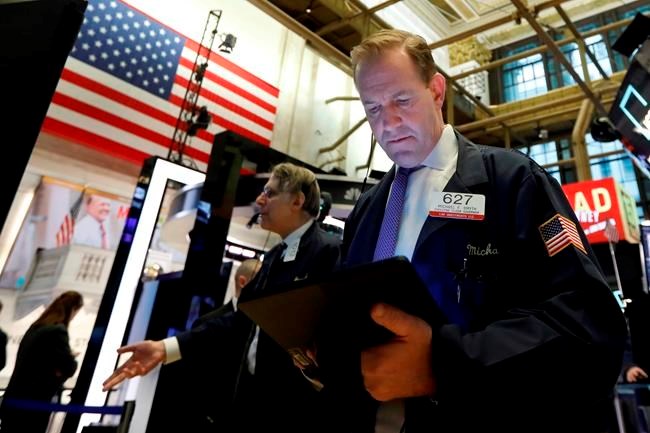WASHINGTON — The response in stock markets to the growing risk from the coronavirus has been swift and fierce. But a better gauge of fear on Wall Street may be the bond market, where the moves over the past few weeks have been even more breathtaking.
Interest rates on a range of U.S. government bonds have plunged to all-time lows as investors seeking relative safety from stocks have furiously snapped them up . (As the price of a bond goes up, its interest rate, or yield, declines.)
The yield on the 10-year Treasury — a benchmark for mortgages and other consumer debt — was 1.9% as recently as Dec. 24. On Friday, it dipped below 0.7
“The bond market is already pricing in a worst-case scenario — a U.S. and global recession,” said Scott Anderson, chief economist at Bank of the West.
The plunging yields across bond markets could hamstring the Federal Reserve's ability to respond to a future recession. During previous economic slumps, the Fed has sought to drive down longer-term rates to try to stimulate borrowing and spending. But with those rates already nearly as low as they can go, the Fed now has less firepower at its disposal.
The shrunken bond yields will also make it harder for those who invest in them to earn much income: The return on the benchmark 10-year Treasury note is now less than half the inflation rate. After adjusting for inflation, an investor who buys a Treasury will effectively lose money over the course of the loan.
The widespread uncertainties surrounding the viral outbreak have punished stocks for the past two weeks. From the record high that the Standard & Poor's 500 stock index set two weeks ago, it's now shed 12% of its value.
The virus has cut off many needed parts and supplies from China and caused business travel restrictions, jeopardizing sales at hotels and airlines and raising the
The scant yields aren't stopping panicky investors from shifting more and more money into bonds. With bond yields below zero in Europe and Japan, global traders have piled into Treasurys, which, despite their diminished yields, still pay comparatively more income. That increase in demand has raised U.S. bond prices and lowered yields.
One way of viewing the phenomenon is that investors in a very low-yielding bond are paying for the safety of the investment. Or they may hope to sell the bond at a profit — if rates go even lower, as many evidently believe they will.
On the positive side of the ledger, low or negative interest rates can make it easier for companies and consumers to borrow, stimulating economic activity.
In part, the tumbling yields reflect investor expectations that the Fed will cut its short-term benchmark rate even further in coming months, even after having announced a surprise rate cut this week. This week's move lowered the range of the Fed's rate to just 1% to 1.25%. Some economists say that by mid-year, the benchmark rate may be back near zero, where it stood for seven years beginning with the 2008 financial crisis.
Seth Carpenter, an economist at UBS and a former Fed staffer, says investors are anticipating that if the Fed's short-term rate does reach zero amid a sharp economic slowdown, it will remain at that level for years. The Fed could even start buying longer-term bonds again, as it did in several rounds from 2008 through 2014, to try to further reduce long-term rates.
Some investors are likely thinking, “I want to own them first, so I can sell them to the Fed later,” Carpenter said.
“Inflation's not roaring back anytime soon,” he added, given that oil prices have also fallen as demand has slowed. Should the Fed's key rate reach zero, it's “probably going to be at zero for a long time.”
Also on Friday, Eric Rosengren, president of the Federal Reserve Bank of Boston, suggested that the 10-year would likely fall further if the Fed cut its rate to zero. At that point, “there would be little room for the Federal Reserve to lower rates through large purchases of long-term Treasury securities — like it did to make conditions more accommodative in and after the Great Recession," he said.
Rosengren even floated the idea that the Fed “could buy a broader set of assets,” though he offered no specifics. Japan's central bank has bought a chunk of that country's stocks.
He also mentioned the possibility of the Fed cutting its short-term rate into negative territory, as the European Central Bank and Bank of Japan have done. Chairman Jerome Powell and several other Fed officials have rejected that option for now.
“Such a policy would not be particularly successful in stimulating economic activity,” Rosengren said.
He noted that negative rates can hurt the returns of pension funds, which typically invest much of their holdings in bonds.
Some economists say a similar dynamic of greater saving could occur with bond yields very low, even if they're not negative. And if the economy worsens, the 10-year yield could drop further, potentially into negative territory.
“We in the United States have been looking on with some curiosity at negative interest rates in Europe," said Carl Tannenbaum, chief economist at Northern Trust. “The day may come when we have to figure out what that means for us personally.”
Christopher Rugaber, The Associated Press

